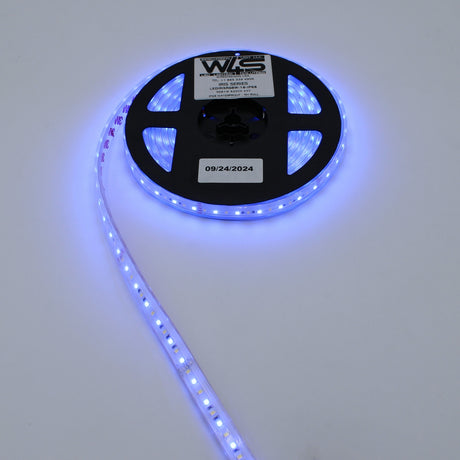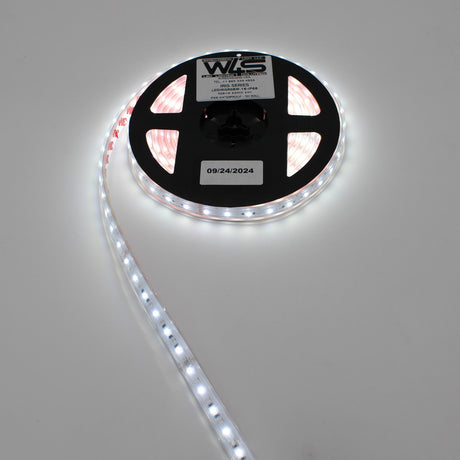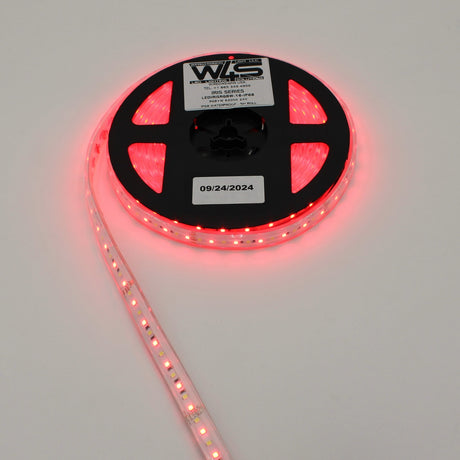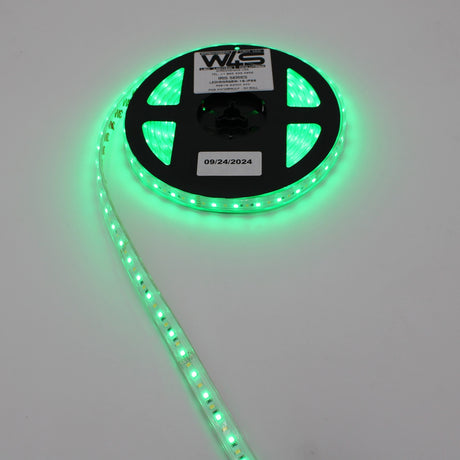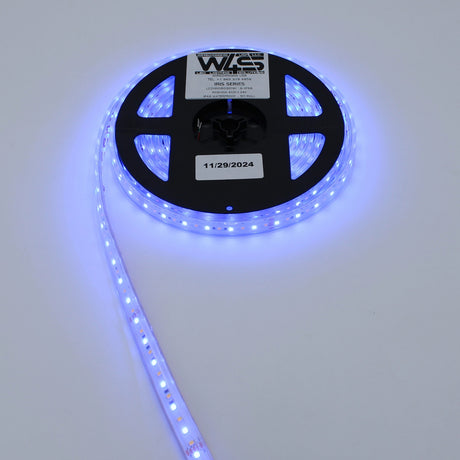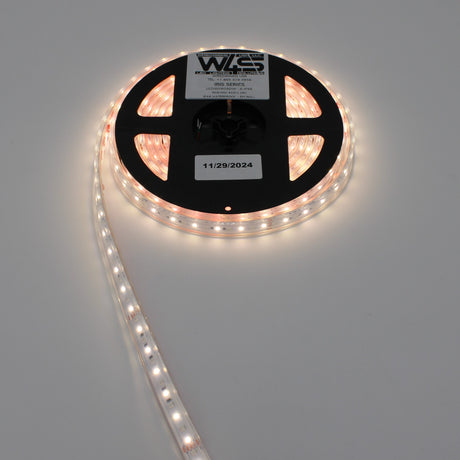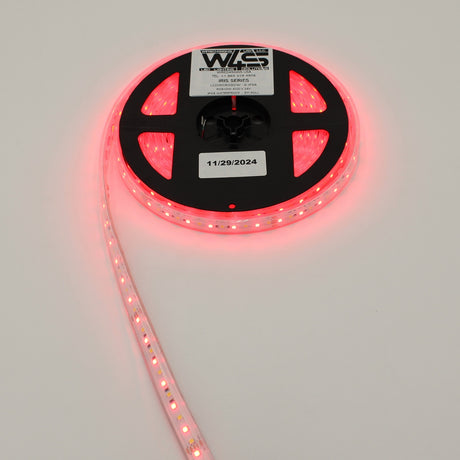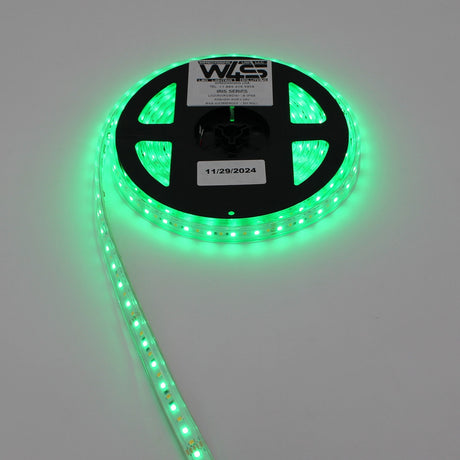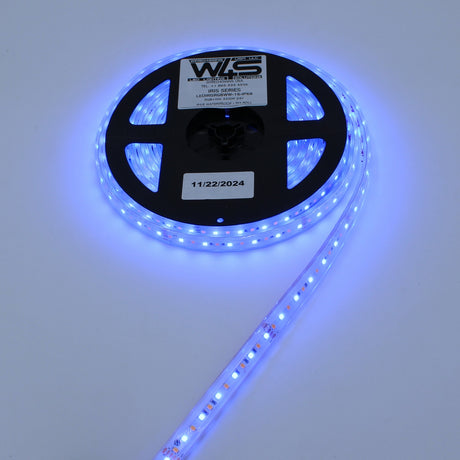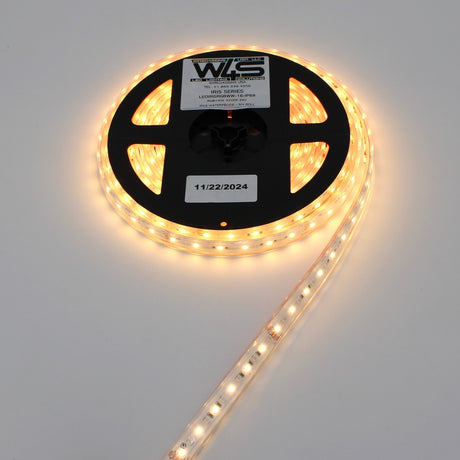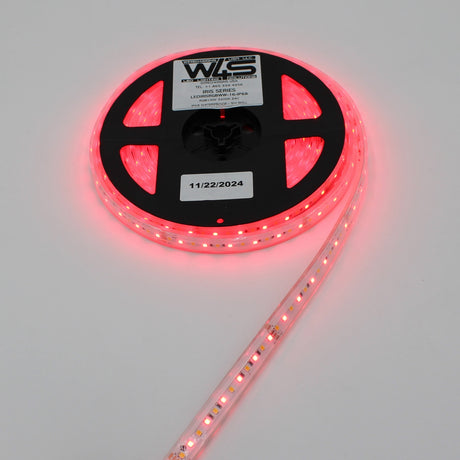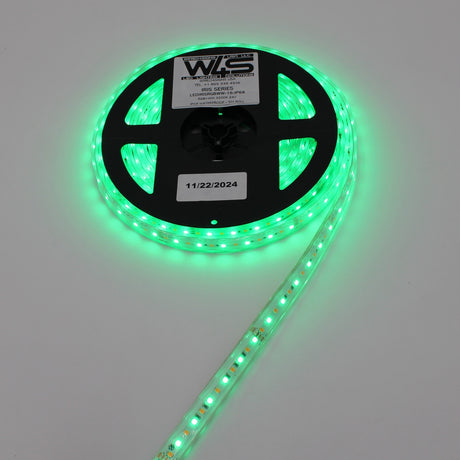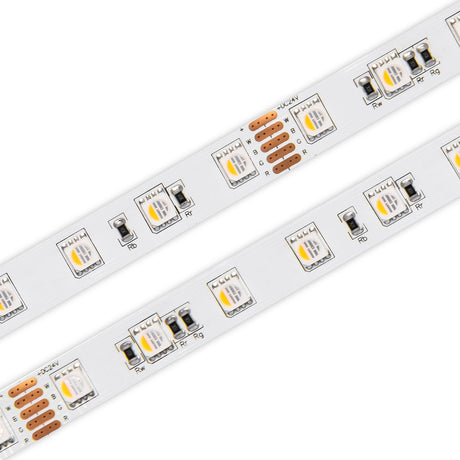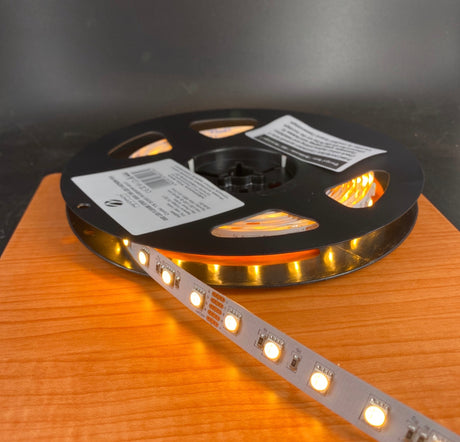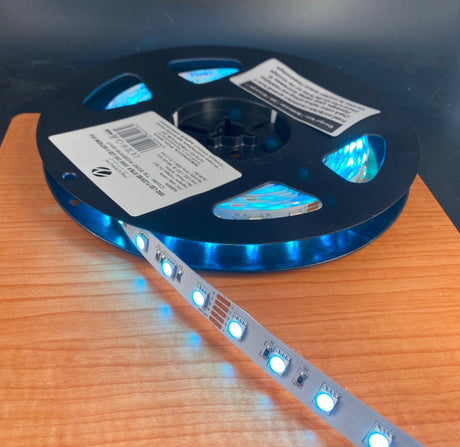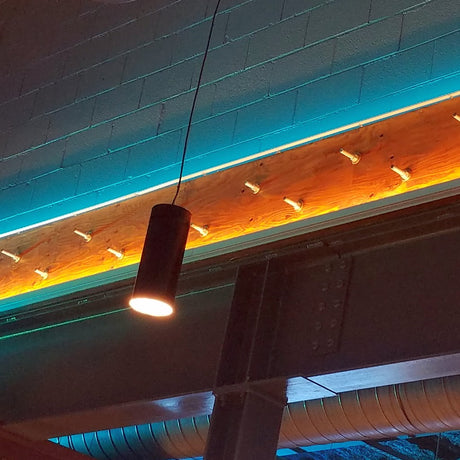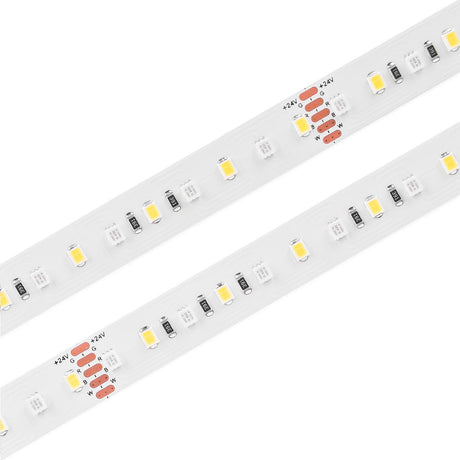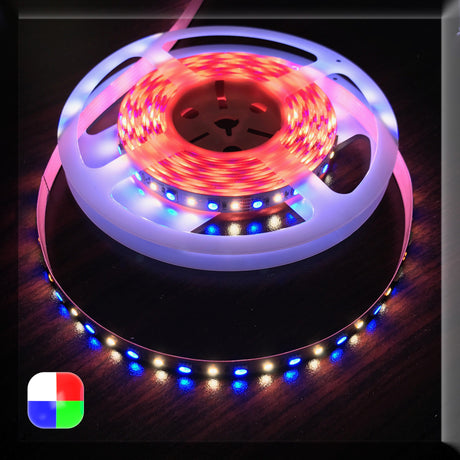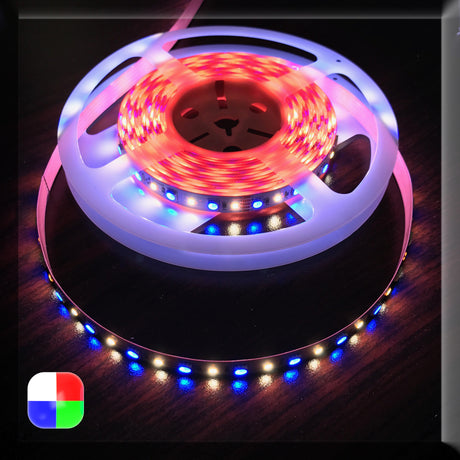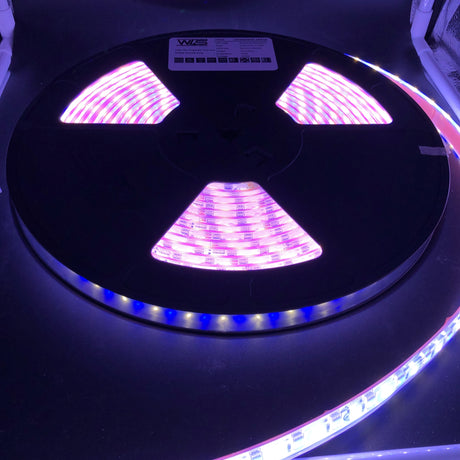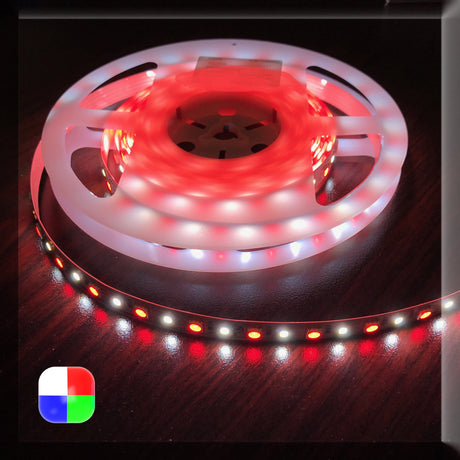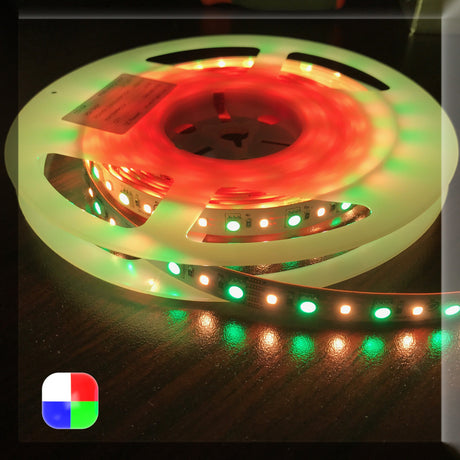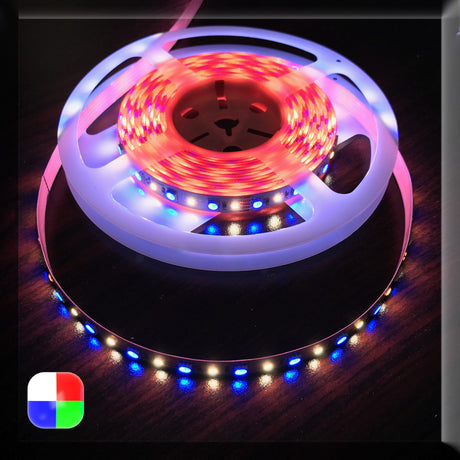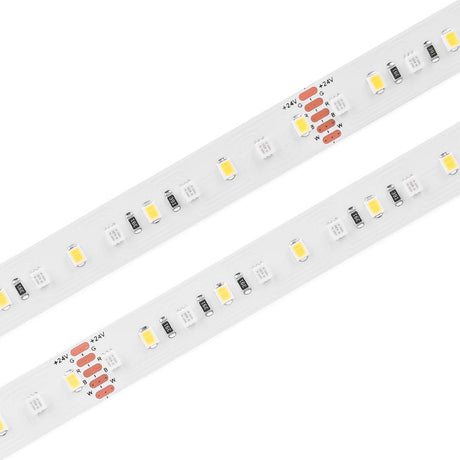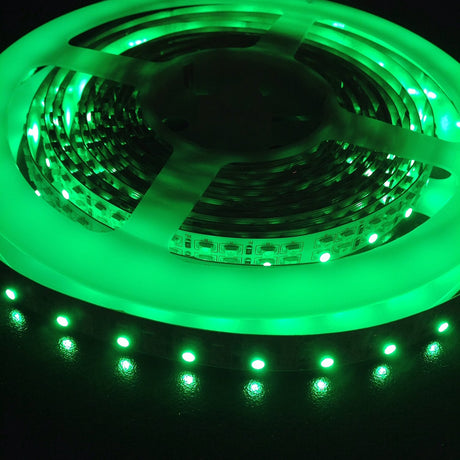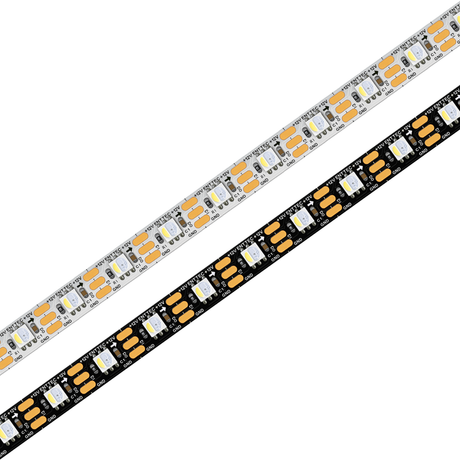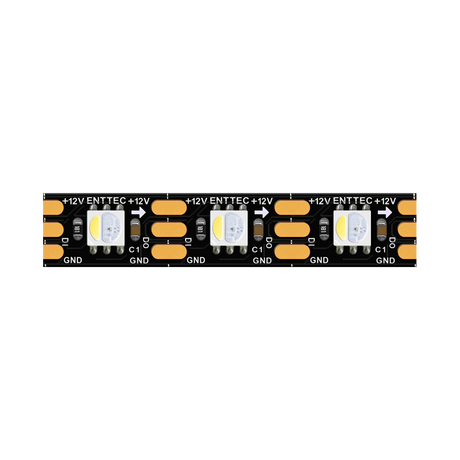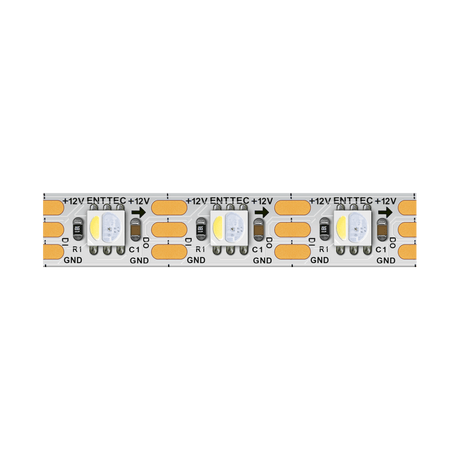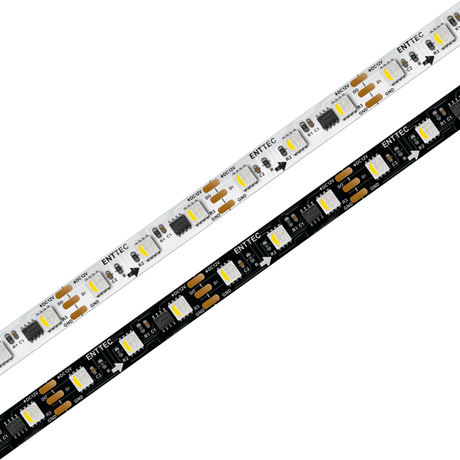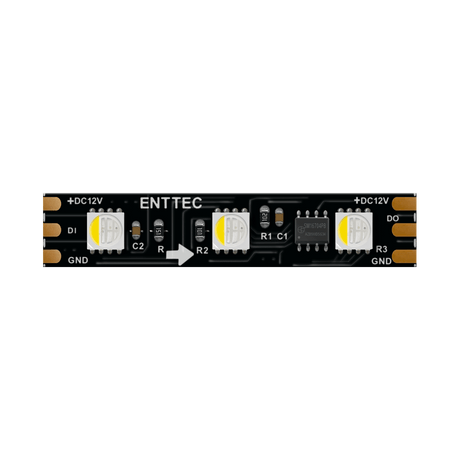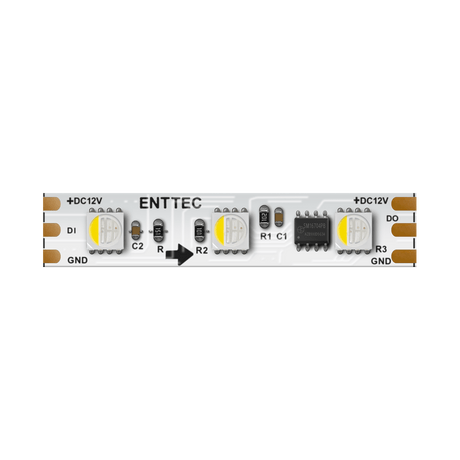RGBW Light Strip
(7 products)- Featured
- Best selling
- Alphabetically, A-Z
- Alphabetically, Z-A
- Price, low to high
- Price, high to low
- Date, old to new
- Date, new to old
FiltersFilter & Sort
-
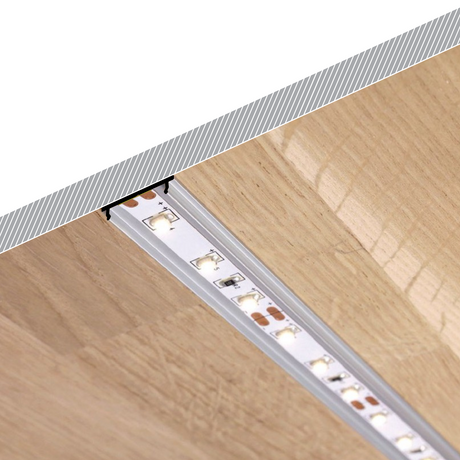 LED Channels
LED ChannelsChannel + Strip Discount
Buy any LED channel and get 10% off any LED strip.
High CRI RGBW IP68 Waterproof LED Strip (24V) ~ Iris Series
From $23.10 USDUnit price /Unavailable4-in-1 Chip RGBW LED Strip ~ Hibiscus Series
From $14.16 USDUnit price /UnavailableHigh CRI RGBW IP20 LED Strip (24V) ~ Iris Series
From $18.31 USDUnit price /UnavailableLow-power RGBW IP20 LED Strip (24V) ~ Iris Series
From $14.65 USD$18.31 USDUnit price /UnavailableRGBA LED Strip (RGB+Amber) 23w/m 24v
From $7.27 USD$8.72 USDUnit price /UnavailableRGBW Pixel IP20 LED Strip (12V) ~ Enttec 8PX Series
$295.68 USDUnit price /UnavailableLong-Range RGBW Pixel IP20 LED Strip (12V) ~ Enttec 8PX Series
$221.76 USDUnit price /Unavailable
What is an RGBW LED strip?
An RGBW LED strip is a type of LED strip light that combines RGB (Red, Green, Blue) LEDs with a separate White LED. This combination allows you to create a wide variety of colors and lighting effects with just one product. The white LED component adds an extra dimension, providing a warm or cool white light that enhances the overall lighting experience. This flexibility makes RGBW light strips perfect for everything from ambient lighting to accent lighting and beyond.
Key Features of RGBW LED Strip
1. Full Spectrum Color Mixing: RGBW LED strips offer a wide range of colors with Red, Green, Blue, and White LEDs. This allows you to create vibrant, full-spectrum lighting effects, from vivid colors to warm whites.
2. Adjustable Brightness: Control the brightness levels easily with RGBW LED strips. Whether you need bright, focused light or a softer glow, you can adjust it to suit your needs.
3. Easy Installation: These LED strips come with an adhesive backing, making them simple to install on various surfaces. They are flexible and can be cut to fit any space, providing versatility in placement.
4. Energy Efficient: RGBW LED strips use less power compared to traditional lighting, helping you save on energy costs while providing high-quality illumination.
5. Long Lifespan: With a lifespan of up to 50,000 hours, RGBW LED strips offer long-lasting performance, reducing the need for frequent replacements.
6. Remote Control Compatibility: Most RGBW LED strips come with a remote control or can be connected to smart home systems, allowing you to easily change colors, brightness, and lighting modes.
7. Customizable Lighting Effects: Create various lighting effects, such as fades, strobe, and smooth transitions, to enhance the ambiance of any room or event.
8. Waterproof Options Available: For outdoor or damp environments, there are waterproof versions of RGBW LED strips, ensuring durability and reliable performance in different conditions.
Applications of RGBW Light Strip
-
Home Lighting: Enhance ambiance in living rooms, bedrooms, or kitchens with adjustable colors and brightness. Perfect for creating mood lighting or highlighting architectural features.
-
Entertainment Spaces: Use in home theaters or game rooms to set the mood with dynamic color-changing effects. Ideal for parties or relaxation.
-
Commercial Spaces: Improve customer experiences in retail stores, restaurants, and bars with customizable lighting that can adapt to different times of the day or special events.
-
Outdoor Lighting: Illuminate gardens, patios, or walkways with weather-resistant RGBW strips. Choose from various colors and brightness levels to match your outdoor activities or seasonal themes.
-
Accent Lighting: Highlight artwork, shelves, or countertops with subtle RGBW lighting. Adds a touch of style and elegance to any space.
What is the difference between RGB and RGBW pins?
The difference between RGB and RGBW pins lies in the number of color channels they control. RGB pins (Red, Green, Blue) control three colors and mix them to create various colors. This setup is common in LED lighting and displays.
RGBW pins (Red, Green, Blue, White) include an additional white channel. The white pin provides a pure white light, enhancing brightness and color accuracy. This allows for a wider range of colors and more precise white tones compared to RGB-only setups.
In summary, RGBW offers improved color quality and brightness over RGB by adding a dedicated white channel.
RGBW Light strip, Color Changing LED Strip Lights
-
Iris Series - High CRI RGBW LED Tape
These Duris OSRAM 2835 Flexible RGBW Strips are rated at 15.6watt per meter and are cuttable every 100mm. The Iris Series has indoor, RGBW strip lights waterproof versions available, and the RGB white led strip requires an RGBW controller because it is a 24v strip; a 24v LED driver is required. The Iris RGBW Strip is technically a 120led per meter strip as it has 60 x 2835 RGB and 60 x mono-color OSRAM DURIS 2835 alternating per meter. Our Casambi RGBW BLE Mesh LED Controller or Blebox Wifi RGBW controller is ideal for controlling these strips. We can supply this in RGB-2700k, RGB-3000k, RGB-4000k, and RGB-6000k versions.
-
Iris XL Series - Double row RGBW Strip Lights
These RGBW strip lights is a dual row LED light strip, meaning that the chips run side by side on the PCB. The 24v strip carries 60 of the SMD 5050 RGB and the 3014 OSRAM DURIS E3 chipsets. Our Casambi RGBW BLE Mesh LED Controller or Blebox Wifi RGBW controller is ideal for controlling these strips.
This strip light is rated at 17.3watt per meter. We can supply this in RGB-2700k, RGB-3000k, RGB-4000k, and RGB-6000k versions.
-
Hibiscus Series - RGBW 4 in 1 Strip Lights
The Hibiscus Series is a unique RGB 4 in 1 LED strip, meaning that each LED Chips set is divided into four color diodes; red, green, blue, and white. The 24v strip is available in RGB-2700k and rated at 19.2watt per meter. Our Casambi RGBW BLE Mesh LED Controller or Blebox Wifi RGBW controller is ideal for controlling these strips.
-
Strelitzia Series - RGB CCT 5 in 1 Strip Lights
The Strelitzia Series strip is an RGBW CCT LED strip, meaning that you can pick any color and have the ability to choose any color white between 2700k soft white to 6000k cool white. Our RGB CCT controller, Casambi 5-ch RGB Tunable White LED Bluetooth Mesh Controller, is an excellent choice for controlling this LED strip. Unlike the Gledopto RGBCCT, Miboxer wifi 5 in 1 led strip controller or Milight 5 in 1 controller, the Casambi controller operates on a highly stable Bluetooth mesh network.
The Strelitzia makes a great Philips hue light strip alternative as it has a more significant led population and therefore is easier to diffuse. Another reason why it is an excellent Philips hue led strip alternative is because it can be cut every 100mm.
How do you use RGBW?
Using RGBW LED strips is simple and versatile. Follow these steps to get started:
- Select Your RGBW LED Strip: Choose the right RGBW LED strip for your project based on length, brightness, and color temperature.
- Power Supply: Connect the RGBW LED strip to a compatible power supply. Ensure the power supply matches the voltage requirements of your LED strip.
- Controller Setup: Use an RGBW controller to manage the colors and brightness. Connect the RGBW LED strip to the controller.
- Mounting: Attach the LED strip to the desired surface using adhesive backing or mounting brackets.
- Programming: Use the controller’s remote or app to program colors, brightness, and effects. Set different zones if using multiple strips.
- Maintenance: Periodically check connections and clean the LED strip to maintain performance.
Top RGBW LED Strip Brands on Amazon Compared with Ours
Join us as we dive into the world of LED strip kits, comparing popular Amazon brands Keepsmile, Daybetter, and Govee against our high-quality Hibiscus RGBW strip. We meticulously analyze each kit, focusing on quality rather than just features. This detailed video is for anyone looking to make an informed decision about the best LED strip to purchase, whether for home or commercial use.
Why Buy RGBW LED Strips from Us?
- Our RGBW LED strips deliver bright, vibrant colors with superior light quality. They are built to last, offering reliable performance and long lifespan.
- Designed for hassle-free setup, our LED strips come with user-friendly installation instructions and all necessary accessories. Transform your space quickly and effortlessly.
- We prioritize your satisfaction. Our dedicated customer support team is available to assist with any questions or concerns, ensuring a smooth experience from purchase to installation.
- Get the best value for your money with our competitively priced RGBW LED strips. Enjoy high-quality lighting without breaking the bank.
FAQ
What is RGBW full of?
RGBW stands for Red, Green, Blue, and White. It is a color model used in LED lighting systems to provide a wide range of colors and high-quality white light. RGBW combines red, green, and blue LEDs with an additional white LED to enhance color mixing and achieve better brightness and color accuracy.
Which is better RGB or RGBW?
When comparing RGB and RGBW, RGBW is generally better. RGBW includes an additional white LED, providing better color accuracy and brighter whites. This makes RGBW ideal for lighting applications requiring true white light and more vibrant colors. In contrast, RGB can create white by combining red, green, and blue LEDs, but the result is often less pure and less bright. So, for superior lighting quality, RGBW is the preferred choice.
How many colors does RGBW have?
An RGBW LED can produce a total of 16.8 million colors. This includes the standard 16.7 million colors from the RGB spectrum plus additional variations with the inclusion of white light. The white LED allows for a broader and more accurate range of colors and enhances the overall color quality.
How much power does an RGBW LED strip use?
An RGBW LED strip typically uses about 14.4 watts per meter. This power consumption can vary depending on the manufacturer and the specific type of LED used. To calculate the total power usage, multiply the length of the LED strip by the wattage per meter.
Is RGBW better than RGB?
Yes, RGBW is better than RGB. RGBW LED lights include a white LED in addition to the red, green, and blue LEDs found in RGB lights. This white LED allows for a purer and brighter white light, which improves color accuracy and brightness. RGBW lights are ideal for both general lighting and color-changing effects, making them more versatile and efficient compared to RGB lights.
How many wires for RGBW?
RGBW LED lights require five wires. The wires are: one for red, one for green, one for blue, one for white, and a common ground wire. Using these five wires allows for precise control of each color and the white light, enabling a wide range of lighting effects and combinations.
How many colors does RGBW have?
RGBW has 16.8 million colors. This includes the 16.7 million colors from the RGB spectrum and an additional white (W) element for enhanced brightness and color accuracy.
How do I connect my RGBW LED?
To connect your RGBW LED, first, ensure you have an RGBW LED controller and power supply. Connect the positive wire from the LED strip to the controller's positive terminal. Then, connect the R (red), G (green), B (blue), and W (white) wires to their corresponding terminals on the controller. Finally, connect the controller to the power supply. Make sure all connections are secure. Use appropriate connectors and follow the manufacturer's instructions for best results. This setup will allow you to control your RGBW LED using the controller, ensuring optimal lighting performance.
How do color-changing LED strip lights work?
Color-changing LED strip lights work using RGB LEDs that mix different colors to produce a range of hues. Each LED has three separate diodes that emit red, green, and blue light. By adjusting the brightness of these diodes, the LED strip can create various colors and effects. Controllers or remote controls are used to select and change colors, adjust brightness, and set lighting modes. These strips are popular for home decoration and ambiance lighting due to their flexibility and ease of installation.
How do multi color LED lights work?
Multi-color LED lights use a combination of red, green, and blue (RGB) LEDs to produce a wide range of colors. By adjusting the brightness of each color, these LEDs mix together to create different hues. This process is called additive color mixing. The light emitted from the RGB LEDs blends together, allowing the LED lights to display various colors, from warm whites to vibrant shades.
Can any LED light change color?
No, not all LED lights can change color. Only RGB (Red, Green, Blue) LED lights have the capability to change color. These LED lights can mix different colors by adjusting the intensity of each color channel. Standard white LED lights or single-color LEDs do not have this feature. For color-changing capabilities, look for LED lights labeled as RGB or color-changing LEDs.
Do LED strips use a lot of electricity?
No, LED strips do not use a lot of electricity. They are highly energy-efficient compared to traditional lighting options like incandescent bulbs.
Why are the 3 lights on my LED strip a different color?
The 3 lights on your LED strip may be a different color due to several reasons. First, it could be a manufacturing defect where the LEDs were not matched correctly. Second, the issue could be with the power supply, which might not be delivering consistent voltage to the LED strip. Third, if you're using a color-changing LED strip, the controller might be malfunctioning or not set correctly. To fix the problem, check the connections, ensure the power supply is compatible, and verify the controller settings. If the issue persists, contact the manufacturer or a professional for further assistance.
Why won't my LED lights change color?
If your LED lights won't change color, it could be due to several reasons. First, check if the LED controller is functioning correctly and set to the desired color mode. Make sure the remote or app used to control the LED lights has fresh batteries or is connected properly. Also, ensure that the LED lights and controller are compatible. If the LED strip is damaged or has a loose connection, it may not change colors as intended. Finally, verify that the power supply is adequate and working. If issues persist, consult the manufacturer’s troubleshooting guide or seek professional assistance.
Why is my RGBW LED strip not working?
If your RGBW LED strip is not working, here are common issues to check:
- Power Supply Issues: Ensure your power supply matches the voltage requirements of the RGBW LED strip.
- Connection Problems: Verify all connections between the LED strip and the controller are secure and properly aligned.
- Controller Malfunction: Test the controller to make sure it is functioning correctly and is compatible with your RGBW LED strip.
- Incorrect Wiring: Double-check that the wiring matches the color codes and specifications of the LED strip.
- LED Strip Damage: Inspect the LED strip for any physical damage or defective segments.
For troubleshooting, ensure you have the correct power supply, secure connections, and functional components to resolve the issue with your RGBW LED strip.
Your cart


